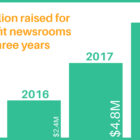
Five Ways to Foster Long-lasting Board Engagement
|
Running a youth-centered nonprofit has many unique challenges, but an engaged and invested board should not be one of them. If one of your biggest problems in running your organization is engaging your board members in fundraising, this article is for you. Here at Fordable Fundraising, we have found that incorporating these five practices reduces revolving door syndrome and encourages board members to engage in fundraising more deeply:
1: Define Each Board Member’s Role
Whether you have board members already or you are looking to onboard new members, defining board members’ roles based on their positions and key strengths will provide a solid foundation of executive support to meet initiatives. This can be as simple as a one-page job description or a detailed summary of this role. Having your board members be part of this conversation can lead to more buy-in and better outcomes overall.



